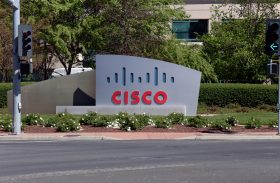Cisco Unbundles IOS After AT&T Goes Full Whitebox

Coincidence or not, Cisco today made the remarkable announcement that it is disaggregating, or unbundling, many versions of its operating system (OS) for enterprises and service providers, including IOS XE and IOS XR, just a day after AT&T announced plans to deploy 60,000 white boxes for its mobile network.
Disaggregating the operating system from the hardware means that customers can run the operating system on other vendors' hardware, including generic, commercial off the shelf (COTS) white boxes. This has been a big trend in software-defined networking (SDN), which has threatened established routing vendors such as Cisco (CSCO) and Juniper Networks (JNPR) because their business model is heavily invested in proprietary hardware.
How Cisco Resisted Disaggregation
Although the move may seem inevitable to some -- and I've been writing about the disaggregation trend since 2014 -- Cisco has been among the more reluctant proprietary networking hardware vendors to move to disaggregation. For example, Juniper disaggregated its JUNOS operating system in 2015! And Cisco has even recently denied industry murmurs that it was moving toward disaggregation.
Now, Cisco disaggregation (can we call it Ciscaggregation?) is here, just a day after AT&T's bombshell, which shook up the industry. In its announcement, Cisco points out that "hyperscale web providers are pushing for disaggregated solutions for their data centers" and "Service providers have expressed their willingness to move towards disaggregated solutions." This is all true.
Cisco says that the "vast majority of our customers prefer to buy complete systems with world-class support from Cisco," which is a good argument that white boxes are not going to take all market share overnight -- customers still want to depend on a service model. But there is no doubt that yesterday's announcement from AT&T was seen in the industry as a game changer, with such a large and aggressive rollout of whiteboxes.
According to Cisco, it will sell its new disaggregated software solution as follows:
Cisco IOS XR for service providers: This OS can now run on fixed or modular switches and routers powered by Cisco and merchant silicon, x86 servers as virtualized software across public cloud, and specific third-party devices.
Enterprise Cisco IOS XE: This will include Cisco Validated Design (CVD) Configuration Management Templates for IOS XE, which automate deployment of Cisco reference designs through the use of declarative configurations. Cisco is also introducing Application Hosting capabilities on the Catalyst 9000 switches as well as our ISR/ASR routers, enabling various Cisco and third-party applications to be hosted in Linux containers (LXC) or as a Kernel-based VM (KVM) in our 16.8.1 release of IOS XE this month.
Data Center Switching Cisco NX OS: Cisco offers numerous portability options for Nexus switches and NX OS, including the Cisco Cloud Scale Switch Abstraction Interface (SAI). SAI allows customers to run the network operating system of their choice on the SAI-ready Nexus platforms. Cisco has also made it possible to run our Nexus Operating System (NX OS) on third party hardware platforms -- independent from our Nexus switches. Cisco will offer a virtual NX OS version.
Service Providers Grow Their Own
Cisco says this is an "exciting" moment -- but it's hard to see how Cisco suddenly got all excited about a trend it has downplayed for years. Now that the white box trend has been firmly established, it's going to present more challenges for hardware vendors to distinguish themselves and move faster to a software business model.
In fact, what should really scare the large router vendors such as Cisco and Juniper is that AT&T is building and deploying its own operating systems and making wide use of open-source code. ATT's white boxes will use these dNOS-powered white box machines through ONAP, or Open Network Automation Platform, and run AT&T's homegrown OS, which is called dNOS for "Disaggregated Network Operating System."
As AT&T said in the announcement:
We’ve committed to virtualizing 75% of our core network functions by 2020. We hit our 55% goal in 2017. We’re announcing today that our goal for 2018 is 65%. We’ll be providing additional context at the Open Networking Summit in Los Angeles this week.
In addition, AT&T said that "tools like ONAP are vital to deploying and managing the next generation of ultra-fast broadband speeds for our customers," which is a not-so-subtle message to vendors of proprietary network OSes in service-provider networks, such as Cisco and Juniper.
So, although Cisco is spinning the move as an exciting evolution of its product line, it's clear that the company is responding to industry pressures, rather than pushing the innovation itself. Cisco has been one of the more reluctant players to hop on the disaggregation train, but now it has finally caved.












